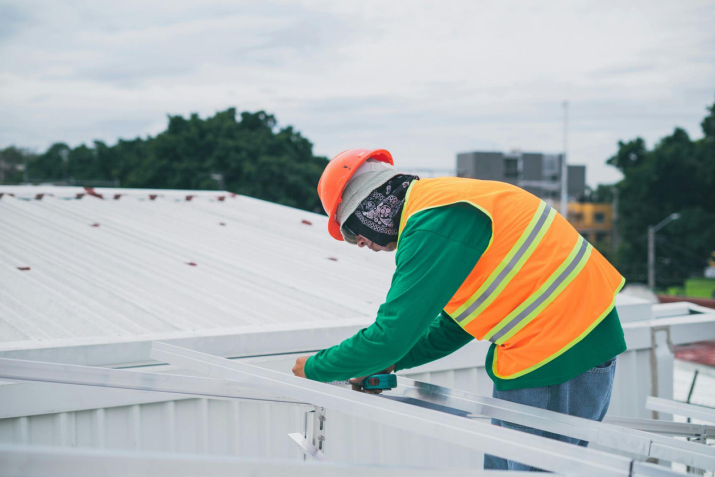Commercial and industrial roofs differ critically in design, functionality, and materials. Before investing, consider some key differences to determine which one is appropriate for you.
Size and Usage
Commercial roofs are appropriate for gyms, malls, restaurants, and offices. Whereas, industrial roofs are built for warehouses, factories, and manufacturing plants.
Commercial roofs weigh relatively less and are not meant to support heavy loads. Greater structural integrity is required for industrial roofs to hold up solar systems, HVAC systems, and additional machinery.
Design and Construction
The design and construction of a roof is determined based on its usage. Commercial roofs have low or flat slope designs for several reasons. First off, such a design helps accommodate heating or air conditioning systems inside the building.
For industrial roofs, a larger surface area is required. There is no set size guide, as each of them is built based on the industry’s requirements.
Materials and Durability
Another important difference between industrial and commercial roofs is the material used. Most of the time, commercial roofs are made with the same material as standard roofs with some added features. Shingles and slates are quite common. Polyvinyl Chloride (PVC) and Ethylene Propylene Diene Monomer (EPDM) rubber are used for added protection and durability. Both materials are energy efficient, which means the cost of internal heating or cooling systems will be reduced. They are also resistant to winds, rain, and snowfall. The standard lifespan of a commercial roof is 20 to 30 years.
Industrial roofs cost more than commercial ones. Common materials used are metal and asphalt. Metal roofs are extremely durable and can withstand high temperatures and natural disasters. They remain in great condition for 40-70 years.
Installation Time
It is almost impossible to install an industrial roof in one go. The roof is built in pieces, which are then assembled. Each layer of an industrial roof requires time to set. Since it is exposed to chemicals, special measures are set in place for safety. In contrast, commercial roofs take less time to install.
Maintenance and Repair
Maintanence is the most important factor when it comes to extending the longevity of a roof. For both commercial and industrial roofs, regular checkups and quality assurance are essential. Given the complicated structure and vast surface area of these roofs, self-maintenance is quite difficult. Opt for a reputable roofing maintenance company to ensure the durability of your roof. Consult with experts to figure out the best course of action.
Here are some easy-to-do regulation tips that can make your investment worthwhile:
- Know your insurance and maintenance plan. Ask your contractor to give you details regarding their policies.
- Schedule regular inspections. Don’t wait for an issue to disrupt the daily processes of your building, rather stay ahead.
- Leaves, trash, or moss on the roof can clog the building’s ventilation system. Therefore, keep your roof clean.
- Limit foot traffic on the roof to avoid damaging it.
- Get in touch with trusted and expert roofing companies to save money and time.

